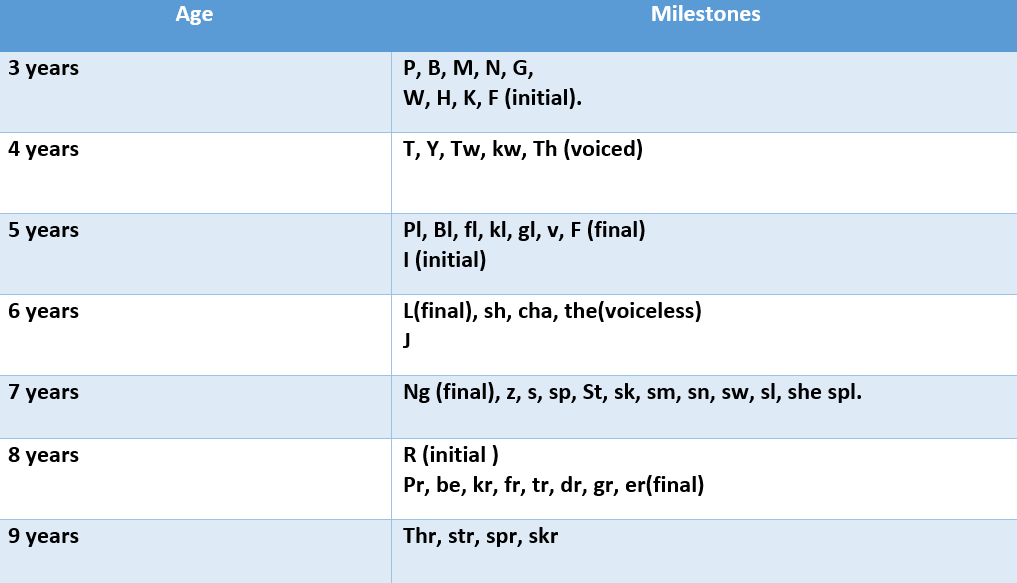Articulation Tips
Articulation is the process by which your tongue, jaw, teeth, lips, and palate alter the air stream coming from your vocal folds to produce sounds, syllables, and words.
Articulation Milestones
The milestones of boys from 3 years to 9 years and girls from 3 years to 9 years are given below:
Articulation Milestones for Boys
Articulation Milestones for Girls
Articulation Tips For Therapists
Vertical (Fey 1986): Focus on 1-2 sounds at a time until the child has mastered them (usually 80% at the sentence level). Once mastered, new objectives are selected. Intense/targeted practice.
Horizontal (Fey 1986): Multiple sounds are selected to be targeted at the same time. During each session, all sounds may or may not be worked on. More exposure to all required sounds.
Cycles Approach (for example, Hodson, 2010): A hybrid of vertical and horizontal approaches. The child cycles through the targets he or she has chosen.
Place yourself in front of them so they can see your face.
Draw their attention by saying, "Eyes are watching and ears are listening".
Draw their attention to your mouth so they can see you correctly model the sound.
Once the child's gaze is locked on your mouth, slowly model the sound and then have them try the target sound.
Always use positive reinforcement to reassure your child that they are on the right track
Articulation Tips For Caregivers
Engage in listening games Say the practice words with the correct and incorrect sounds. Give the child a bell or something to ring. Tell them to make a noise if they hear you say a practice word with the wrong sound. If they miss it, tell them to listen again and repeat the word to help them respond correctly.
Use pictures to help the child understand the words that you are practicing.
Using rhyming to help your child become more aware of speech sounds.
Counting syllables to help your child become more aware of speech sounds.
Tips For Caregivers Articulation
Remember these tips when picking words to practice:
1. We are referring to sounds rather than letters.
For instance, some words that also begin with the letter c would have the sound ("cereal"). The word's pronunciation is our main concern, not its spelling.
2. Usually, it is simplest to create the sound on your own. Once you can articulate it on its own, you can use words and sentences to express it.
3. To begin, maintain the sound's initial position.
Start by mimicking the sound at the beginning or end of words, for instance. You can begin introducing words that have the sound in other positions after they can produce it in one position.
4. The sound you are practicing is typically more difficult to pronounce when another consonant is placed next to it.
For instance, "slide" may be more difficult to pronounce than "see" because the I in slide must be said immediately following the s.


